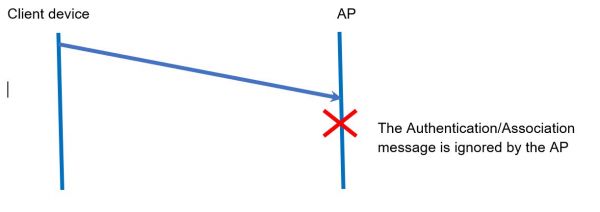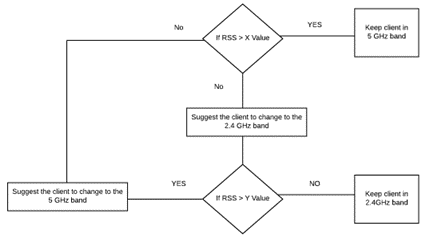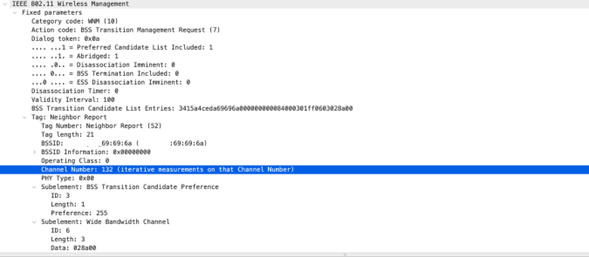Band Steering Complemented with 802.11v | CWNP - Guest Blog
By Nino Castrejón On 11/11/2022
Band steering typically works as follows. When a new device connects to the network, the Access Point (AP) will determine if it is a dual-band device (2.4 GHz & 5 GHz). If so, the AP will push the device to connect to the 5 GHz band by blocking any attempt of the device to connect to the 2.4 GHz band.
How does that work?
It depends on the implementation of each vendor, but basically either the Authentication or Association messages received by the 2.4 GHz radio from the client device are ignored.

Image 1
That's the basic implementation of band steering. But what happens once the device is connected to the radio in the 05 GHz band and that device is moved around the coverage area resulting in a decreased signal strength? Each vendor decides on an algorithm to suggest the end device change to a different radio band:
- A threshold is defined for each radio band, which is normally based either on RSSI or SNR.
- Due to the characteristics of the 2.4 GHz radio band, like better penetration, the threshold required for this radio band is usually higher.
An algorithm like this is defined for this purpose:

Image 2
It is important to remark that the algorithm performs a suggestion to the client to change to a different radio band. Each vendor will implement this in a different way. Here is an example using 802.11v (BSS Transition request). Important: The support of 802.11v capability is exchanged between client and AP during probe request/response, association request/response, re-association request/response management frames:
- When the AP detects that the client crossed the predefined threshold for the current radio band connected, the AP will send a BSS Transition to the client offering the possibility to use the other radio band (from the same AP). In this example a client connected to the 2.4 GHz radio is suggested to change to the 5 GHz band:

Image 3
2. The client can answer to this transition request with a positive response. In this case the status code 0 means that this transition was accepted:

Image 4
Each client Wi-Fi chipset may implement their proprietary algorithms for band change that are unwilling to accept the recommendations made by AP, other devices will always accept the recommendations made (802.11v).
Tagged with: band steering, 802.11v, cwnp, access point
Blog Disclaimer: The opinions expressed within these blog posts are solely the author’s and do not reflect the opinions and beliefs of the Certitrek, CWNP or its affiliates.



